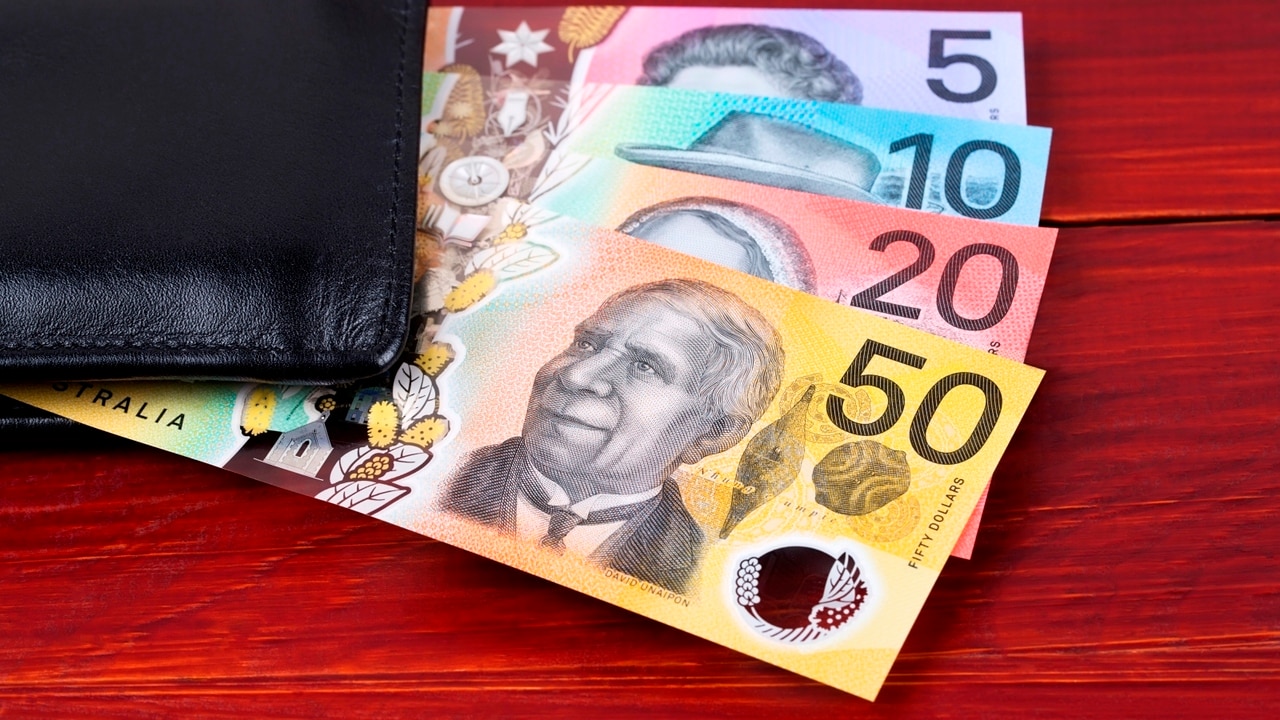Geelong cashless by 2030 in big bank push: finance expert
Cash payments are declining at a rapid rate and yet the RBA Governor tells her children to have dollars in their pockets “just in case”. Share your view.

News
Don't miss out on the headlines from News. Followed categories will be added to My News.
Cash payments are declining at a rapid rate and yet the RBA Govenor tells her children to have dollars in their pockets “just in case”. Share your view.
Angel Zhong
Professor of Finance
School of Economics, Finance and Marketing|College of Business and Law
RMIT University
How often do you use cash these days?
If you’re like most Australians, the answer is “hardly ever.”
A few years ago, I stopped carrying a wallet altogether.
Between my phone’s digital wallet and the cards saved in it, I can pay for just about anything with a tap.
And I’m not alone.
The Reserve Bank of Australia reports that cash now makes up just 13 per cent of payments, down from 70 per cent in 2007.
At this rate, by 2030, cash will be like cheques a few years ago – technically still around, but rarely used.
Australia is on a path toward becoming a functionally cashless society by 2030.
What does that mean?
It doesn’t imply the complete eradication of physical money – notes and coins will still exist —but cash will no longer be the default or dominant way to pay.
Instead, digital transactions (card payments, mobile wallets, bank transfers, and emerging technologies) will handle the vast majority of exchanges.
This shift isn’t being forced upon Australians by governments or banks – it’s being driven by consumer choice.
Digital payments are faster, safer, and more convenient.
Think about the last time you had to hunt down an ATM because a cafe only took cash.
These little frustrations add up, and Australians are voting with their wallets – literally.
Contactless payments mean no more counting coins or waiting for EFTPOS machines to process transactions.
If someone steals your cash, it’s gone.
If they steal your card or hack your account?
Banks have fraud protections in place.
You can freeze your card instantly with an app, and most fraudulent transactions get refunded.
Some worry that going cashless will leave vulnerable people behind —like the elderly or those in remote areas.
But digital payments can actually improve financial inclusion.
Think about gig workers who get paid instantly instead of waiting for a cheque, or charities that can accept donations with a QR code.
Handling cash isn’t cheap.
Businesses pay for secure storage, armoured trucks, and bank fees for deposits.
On average, it takes 29 days for a small business in Australia to process cash each year.
Those costs get passed on to consumers in the form of higher prices.
Critics rightly point out that digital systems aren’t flawless.
Technology outages can temporarily disrupt payments.
But these incidents are rare —and they’re a reason to improve infrastructure, not abandon progress.
If you prefer cash, you should still be able to use it.
But the reality is, most of us are opting out on our own.
Businesses might stop accepting cash because fewer and fewer customers are using it.
By 2030, Australia will be functionally cashless because it is faster, safer and smarter.
The benefits —speed, security, convenience —far outweigh the drawbacks.
Jason Bryce
Cash Welcome campaign manager
There’s five big communities in Australia at the frontline in the big-four bank’s war on cash.
“Geelong is one of three major regional cities and two regional coastal areas in Australia that have no protection from any moratoriums to prevent regional bank closures,” says financial journalist Dale Webster.
Newcastle and Wollongong in NSW plus the Gold and Sunshine coasts in Queensland are the other communities facing an imminent cashless future, if the banks get their way.
Two years ago, then Westpac consumer and banking chief Chris De Bruin told the Australian Financial Review they are planning how towns can go cashless:
“We are having conversations around how we transform their communities, and how do they become a cashless town.”
Right now, Geelong has 12 big-four bank branches remaining (four don’t have teller service) plus six Bendigo Banks, down from 38 full bank branches in 1975.
ANZ Bank branches in Waurn Ponds and Geelong West (Pakington St) have recently removed over-the-counter teller services.
So have the NAB branches in Waurn Ponds and Malop St.
“It’s an offence for a bank to misreport to the regulator the level of service they provide at a branch,” says Webster. “Banks that don’t provide over-the-counter cash service can’t be reported as a branch.”
Branch by branch, town by town, pushing us to a cashless future.
They complain about the cost of distributing cash and are sending Armaguard broke.
The big banks axed their $2 ATM fee for customers of other banks in 2017, along with half a billion dollars in annual revenue.
Those fees supported the cash system.
In 2017, Commonwealth Bank chief executive Matt Comyn described the axing of ATM fees as a gift to Australia.
What was not revealed was the subsequent closure of thousands of bank-owned ATMs.
The amount of cash on issue is rising to a new record level, now over $103 billion.
97 per cent of Australians support a cash mandate for retailers (says Choice) and the government has announced a mandate will begin on 1st January 2026.
The SES says everyone should have cash in their emergency kit.
Women, in particular, are advised to keep cash if they are at risk of financial, emotional or physical abuse.
The RBA Governor Michele Bullock says she advises her children to have cash in their pockets just in case.
Retailers that previously were cashless are now returning to cash.
Originally published as Geelong cashless by 2030 in big bank push: finance expert


